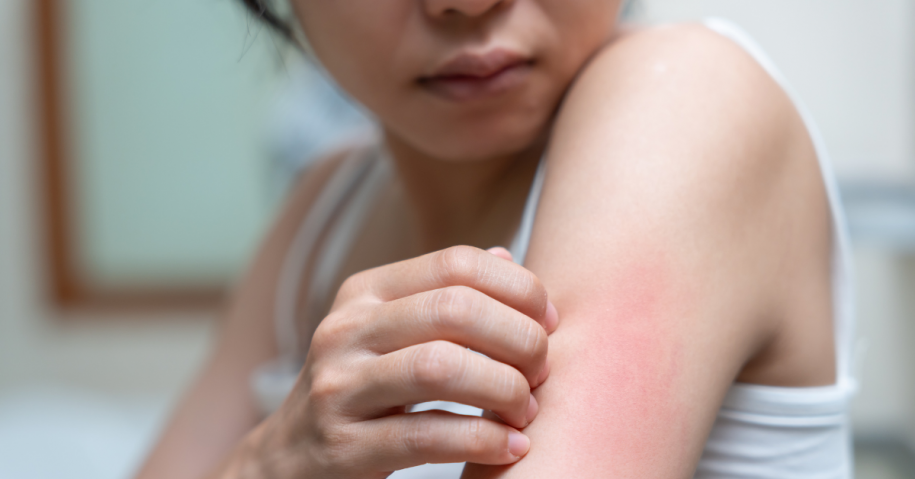Meth sores are open wounds or lesions that occur on the skin as a result of methamphetamine use. They are a visible and distressing consequence of using this drug. Meth sores develop because the drug has strong effects on the body, such as causing severe itching and hallucinations that make users constantly scratch and pick at their skin.
Early recognition and treatment of meth sores are crucial for preventing complications and promoting recovery. This guide aims to empower you with the knowledge needed to promptly identify and address this serious issue.
Understanding Meth Sores: Causes and Symptoms
Meth sores are painful, open wounds that commonly appear on the skin of individuals who abuse methamphetamine. These sores occur as a direct result of the drug’s effects on the body, causing various skin problems.
Appearance of Sores
Typical Characteristics:
- Redness and Swelling: Early-stage sores often appear as red, swollen patches.
- Open Wounds: These patches can break open as they progress, forming ulcers or blisters.
- Scabs and Crusts: Untreated sores may develop scabs or crusts and be prone to infection.
If left untreated, meth sores can worsen significantly, leading to:
- Deep Ulcers: Open wounds might deepen, causing severe tissue damage.
- Infection: Increased risk of bacterial infections like cellulitis or abscesses.
Contributing Factors
Several factors contribute to the development and worsening of sores:
Direct Skin Damage
- Burns from Paraphernalia: Smoking meth using pipes can cause burns on the lips and face.
- Needle Marks: Intravenous use leads to puncture wounds that can become infected.
Weakened Immune System
Methamphetamine use weakens the immune system, making it difficult for the body to fight off infections. This weakening increases the chances of sores getting infected and not healing properly.
Compulsive Behavior
The drug causes compulsive behaviors such as:
- Skin Picking and Irritation: Users often feel compelled to scratch or pick at their skin due to hallucinations or obsessive tendencies. This repetitive action creates new wounds and worsens existing ones.
Lack of Hygiene
Personal cleanliness is often neglected among those abusing meth:
- Neglecting Personal Cleanliness: Poor hygiene practices lead to dirty environments where bacteria thrive.
- Inadequate Wound Care: Failure to properly clean and dress wounds worsens their condition, promoting infection and delayed healing.
Understanding these causes helps in recognizing and addressing meth sores effectively.
The Connection Between Meth Sores and Meth Mites Hallucination
People who use methamphetamine often experience a disturbing phenomenon called meth mites hallucination or formication. This condition makes them feel like bugs or insects are crawling under their skin. It can be extremely distressing, causing them to scratch and pick at their skin vigorously to relieve the sensation.
How Meth Mites Hallucination Worsens Meth Sores
The compulsive behavior triggered by meth mites hallucination makes the problem of meth sores worse. Here’s how this harmful cycle unfolds:
- Initial Sensations: Users start feeling imaginary bugs moving under their skin.
- Compulsive Scratching/Picking: To get rid of these non-existent pests, users scratch and pick at their skin relentlessly.
- Skin Damage: Continuous scratching breaks the skin, creating open wounds that are prone to infections.
- Formation of Sores: If left untreated, these open wounds can turn into severe meth sores.
The Impact of Intense Scratching and Skin Picking
Intense scratching and skin picking not only cause immediate harm but also hinder the healing process. The repetitive damage to the skin makes it hard for wounds to close, leading to larger and more severe sores over time. This can result in:
- Higher Risk of Infection: Open sores are more susceptible to infections, which can worsen the health problems associated with methamphetamine use.
- Permanent Scarring: Persistent picking can cause lasting damage, such as scarring and disfigurement.
- Psychological Effects: The visible sores and scars contribute to the negative perception surrounding methamphetamine abuse, impacting self-confidence and mental well-being.
Understanding the connection between meth sores and meth mites hallucination is crucial for identifying early signs of methamphetamine abuse. By recognizing these symptoms promptly, there is a better chance of providing effective intervention and treatment.
Recognizing Early Signs for Intervention
Identifying meth sores early can make a significant difference in managing and treating them. Here’s how you can spot these sores and take prompt action.
Common Locations for Sores to Appear
Meth sores often develop in specific areas due to repetitive behaviors and direct contact with drug paraphernalia. Look out for sores in these common locations:
- Face: Particularly around the mouth and nose.
- Arms: Especially on the inner forearms where needles might be used.
- Legs: Often on the thighs and calves, sites of frequent picking.
Practical Guidance for Identification
Identifying meth sores requires careful observation of your skin. Here are some tips to help you recognize these sores:
- Visual Inspection:
- Look for red, inflamed spots that may resemble acne or bug bites.
- Check for open wounds that are slow to heal or frequently re-open.
- Notice any scabbing or crusting over existing wounds, indicative of repetitive scratching.
- Characteristics:
- Meth sores usually start as small red bumps but can grow larger if picked at.
- These sores often have irregular edges and can be painful or itch intensely.
Meth sores serve as a visible sign of underlying issues related to methamphetamine use. Addressing these promptly not only improves physical health but also opens doors to broader addiction treatment options. Methamphetamine addiction is treatable, and recovery is possibl
Treating Meth Sores: Medical Care and Beyond
Attempting to treat meth sores on your own can often lead to complications. Medical expertise is essential to properly evaluate the severity of the sores and manage them effectively. Factors like infection risk, underlying health conditions, and potential complications require professional intervention.
Typical Approach to Treating Meth Sores
Effective treatment typically involves:
- Administration of Topical or Oral Antibiotics: These help combat bacterial infections that commonly accompany meth sores.
- Surgical Intervention: In cases of extensive tissue damage or severe infections, surgical procedures may be necessary to remove damaged tissue and promote healing.
Concurrent Addiction Treatment
Addressing the root cause of meth sores necessitates comprehensive addiction treatment. This often includes:
- Medical Detoxification: This initial step helps manage withdrawal symptoms in a controlled environment.
- Residential Rehabilitation Programs: Inpatient rehab programs provide structured support and therapy, crucial for long-term recovery.
- Partial Hospitalization Programs: Partial programs are a great step down in a continuum of care to offer structure and therapy while being able to take care of other responsibilities as well.
Early medical attention for meth sores combined with addiction treatment can significantly improve outcomes. Seeking professional help ensures proper wound care and addresses the underlying issues driving methamphetamine use.
Treatment for Methamphetamine Addiction
If you’re struggling with methamphetamine abuse, it’s crucial to seek immediate assistance from Lighthouse Recovery Institute. Meth sores are not just a surface problem; they’re a physical sign of a deeper, more complex addiction issue. Getting help early on can prevent complications and support your journey to recovery.
Frequently Asked Questions
Meth sores are skin lesions that often result from the use of methamphetamine. They are common in methamphetamine abuse due to factors such as direct skin damage from hot pipes or needles, impaired immune system function, compulsive skin picking, and neglect of personal hygiene.
Meth sores typically appear as open, red wounds on the skin and can progress to larger, more severe sores if left untreated. They may also become infected, leading to additional complications.
Meth mites hallucination, also known as formication, can lead to intense scratching and skin picking, which in turn can cause the development of larger and more severe meth sores due to the trauma inflicted on the skin.
Early signs of meth sores can be recognized by identifying common locations for their appearance on the body. It is important to conduct a self-examination using visual references and seek professional help immediately if there is suspicion of meth sores to prevent complications and facilitate recovery.
Seeking professional help for drug addiction treatment is important because it allows individuals to receive proper care and support. Early detection and intervention in cases of meth sores serve as both a physical symptom and a potential indicator of deeper addiction issues, making it crucial to seek immediate assistance from healthcare professionals or addiction specialists.









